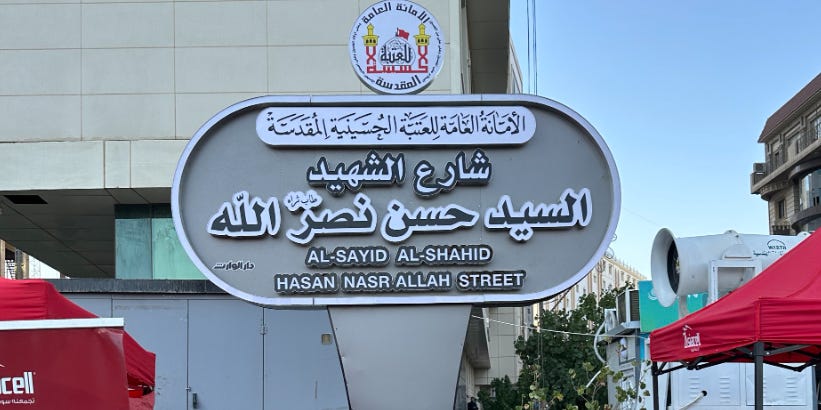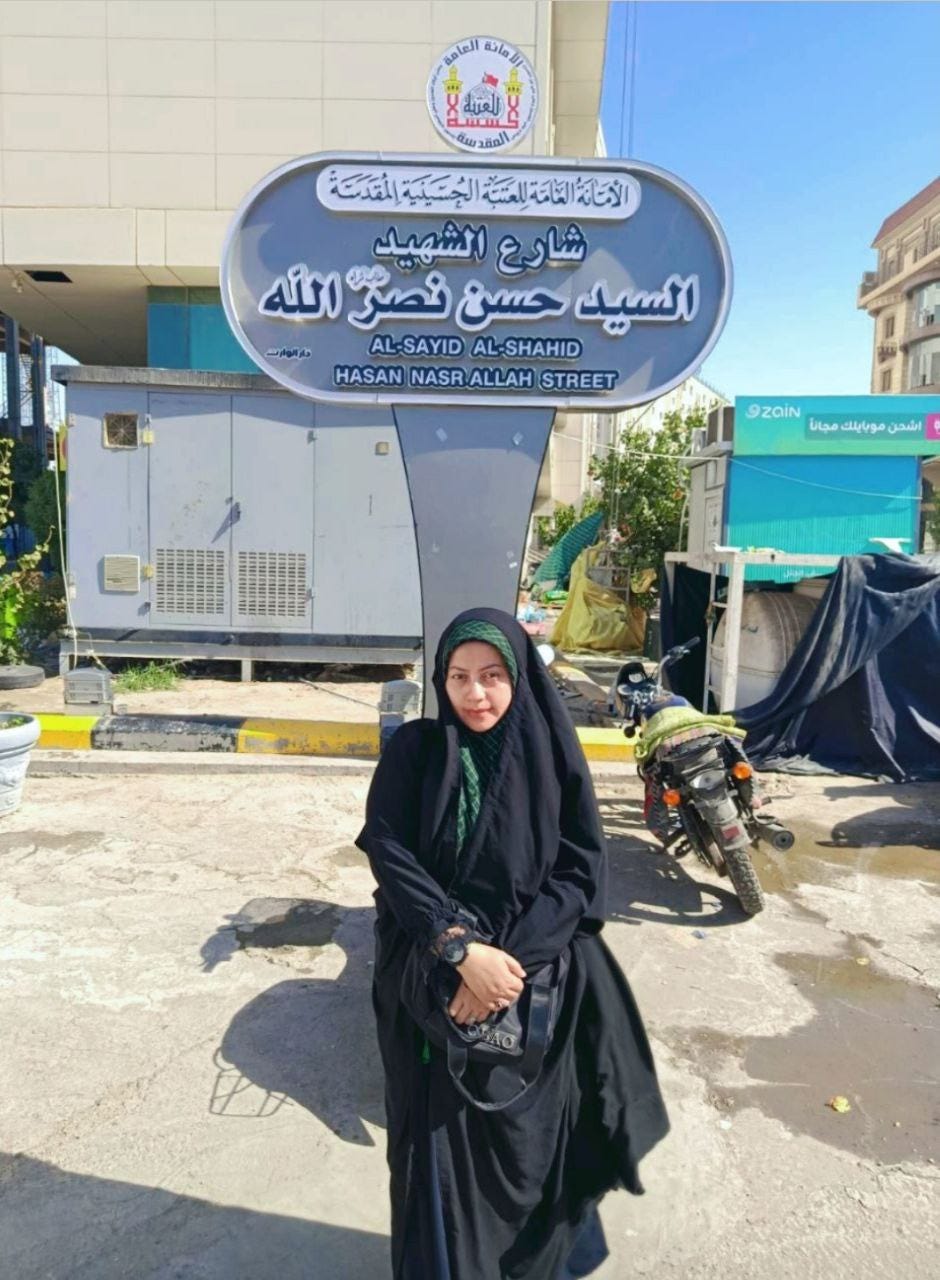From Beirut to Karbala: The Eternal Path of Shaheed Sayyed Hassan Nasrallah
It’s not only the story of a street sign, but of history folding back upon itself—from Karbala in 61 AH to Beirut in the 21st century—an unbroken chain of sacrifice and resistance.
THEMARTYR.NET - I still vividly remember that day in the Holy City of Karbala. My steps came to a sudden halt when a friend said to me, “Look there, the new name of the street—Sayyed Shaheed Hassan Nasrallah Street.”
My eyes followed the direction of his hand. There it was: a large silver sign with bold black letters at a city intersection—“Sayyed Shaheed Hassan Nasrallah Street.” A name so familiar to my ears, now etched into the heart of the holy city, not far from the shrine of Imam Husayn (as).
For a moment, I stood frozen, overwhelmed by a surge of emotion. That name, which I had only heard through screens and speeches that stirred the soul, now stood proudly in Karbala—the Holy city of sacrifice and martyrs, the spiritual center for the lovers of the Ahlul Bayt across the world.
Yes, I had seen his images—raised high on banners, displayed on street signs, and in countless mawkib (pilgrimage tents) along the road from Najaf to Karbala during the Arbaeen Walk.
But to see that name engraved on a great sign, as a street name so close to the Holy Shrine of the Sayyed as-Shuhada (AS)? It felt as though history had folded back upon itself: from Karbala in 61 AH to Beirut in the 21st century, the crimson thread of sacrifice has never been severed.



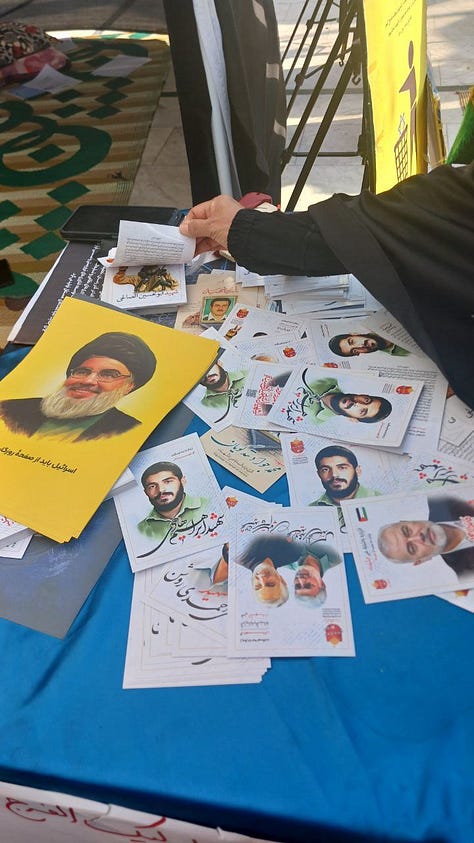
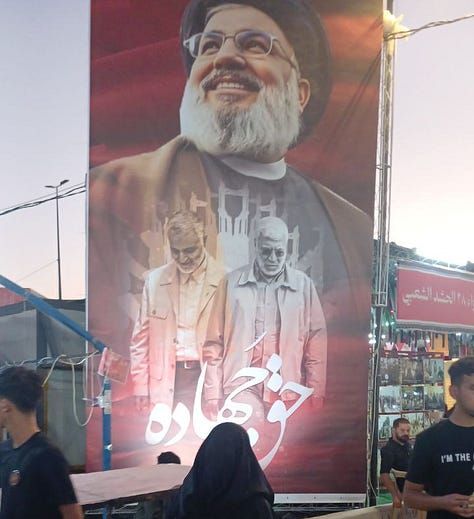
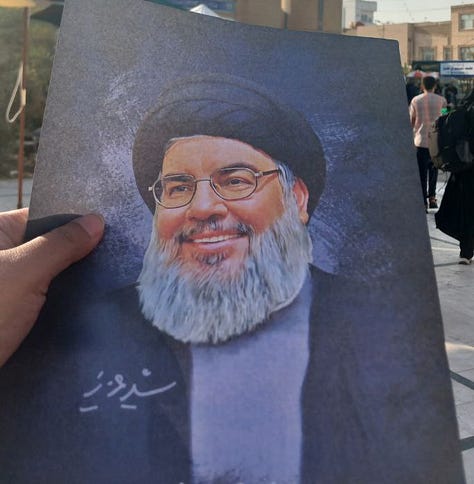
A Symbol that Becomes a Legacy
The decision of the Astān Quds Husaini to name one of the main roads leading to the Holy Shrine after Shaheed Sayyed Hassan Nasrallah was no minor gesture.
It was a symbolic act, born out of reverence for the sacrifice of a resistance commander who dedicated his entire life to Islam, to Palestine, and to the dignity of the Ummah.
That name has now become part of Karbala’s landscape, binding pilgrims to an eternal message: that standing against oppression is a legacy that must always be carried forward.
A Day of Mourning in Beirut
And now, on the first anniversary of his shahadah, my memory drifts back to that day of immense grief—when millions flooded the streets of Beirut. After five months of waiting, his blessed body was finally laid to rest among his fellow shuhada.
Hundreds of thousands arrived from across Lebanon and the wider region, lifting his portrait high, crying out “Labayka ya Husayn,” filling stadiums and streets alike.
It was more than a funeral—it was a human awakening, a testimony that Sayyed Hassan never truly left. He lives on in the hearts of his people.
An Eternal Echo in Karbala
His name now stands at the very heart of Karbala. A reminder that the line he upheld—the Husayni line—remains unbroken. That the blood spilled in Beirut has found its eternal echo in the city of the shuhada.
This street is not merely a road to the Holy Shrine; it is a metaphor: every step taken toward Husayn now passes by the names of the shuhada of our own age—those who continue His (AS) mission.
I stood on that street, a humble pilgrim among multitudes, realizing that the sign was not only a marker of direction, but also a marker of history. It connects Beirut to Karbala, binding the destiny of the martyrs of the past with the Shaheed of this century.
And in that moment, I understood: though his body is gone, the voice, the footprints, and the spirit of Sayyed Hassan Nasrallah will continue to resonate—igniting resistance, defying oppression, and guiding the Ummah toward true liberation.
Karbala teaches us, once again, that the shuhada never die—they only journey from one path of history to another, more eternal one.
(JS)


